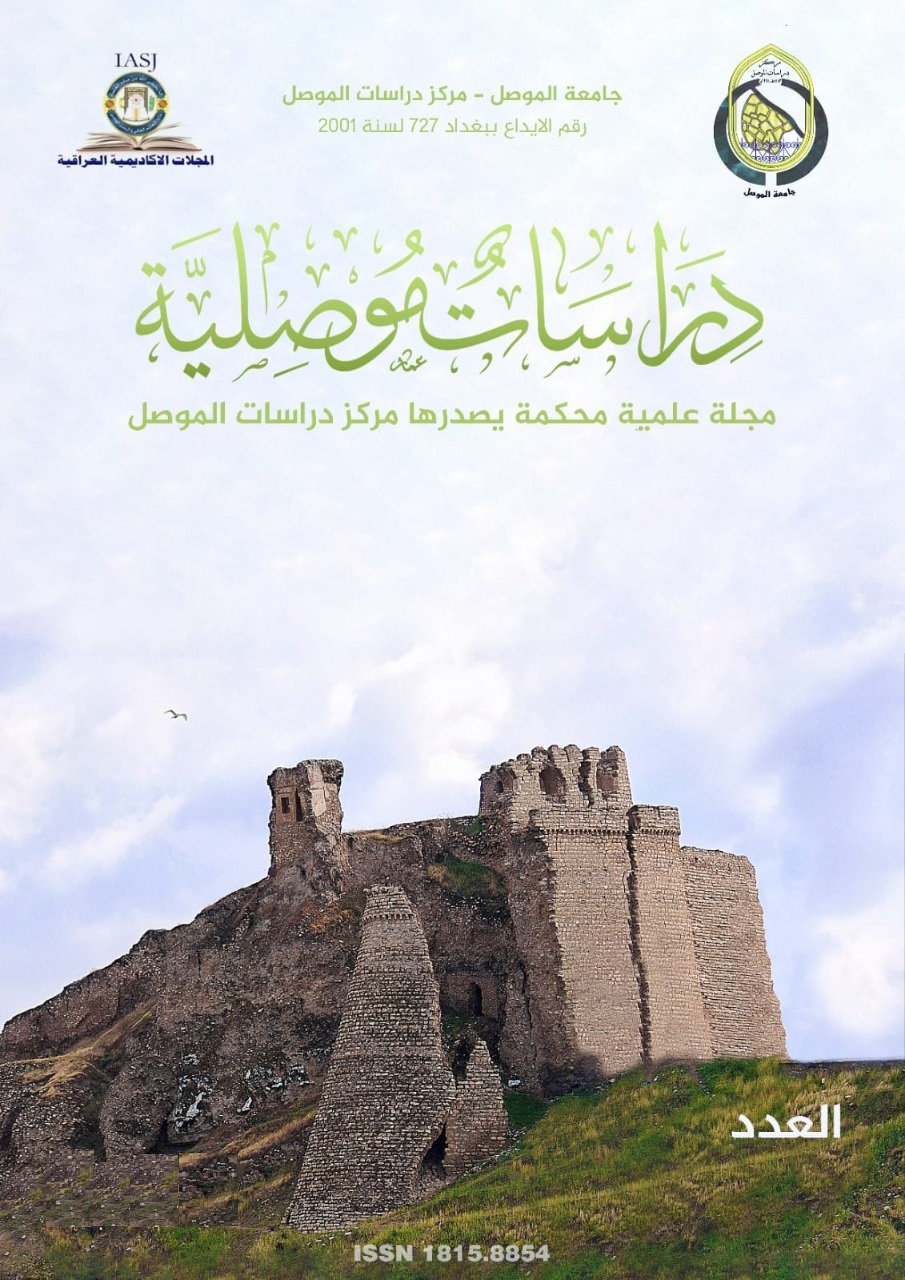Abstract
The Muslawi writer, Dr. Ali Kamal Al Den Al Fahadi, lecturer of Islamic Literature at the College of Arts, Mosul University, is examined here for the coherent and artistic features that characterize his stories in addition to their poetic and sensitive language. They include eight stories published for the period 1999–2004 including: Light Mistress and the Original Horse (1999), Equities in Al Aqsa Sky (2000), Mistress of Towers (2001), The Depressed and the Prey (2001), Dhuhur Valley Angle (2001), River Teacher (2001), Horse and Banner (2003), Ox, Yard and Wrestling (2004).
Ali Al Fahady stories included various descriptive section and expressions showing place and its contents as a container for the event and personality in a distinctive framework. The study deals with the place in Ali Al Fahady stories through analyzing the narrative texts to show their artistic and aesthetic dimensions to reveal their significances.
The study consists of an introduction and three sections where the introduction identifies the concept of place. Section one examines place description concerning general and private place. Section two deals with patterns of place concerning threshold space/ connecting space, tamed place/ usual place, historical place, spontaneous place, theatrical place/ universal place. Section three deals with vision to identify place through the portioning, scene and universal vision.
Ali Al Fahady stories included various descriptive section and expressions showing place and its contents as a container for the event and personality in a distinctive framework. The study deals with the place in Ali Al Fahady stories through analyzing the narrative texts to show their artistic and aesthetic dimensions to reveal their significances.
The study consists of an introduction and three sections where the introduction identifies the concept of place. Section one examines place description concerning general and private place. Section two deals with patterns of place concerning threshold space/ connecting space, tamed place/ usual place, historical place, spontaneous place, theatrical place/ universal place. Section three deals with vision to identify place through the portioning, scene and universal vision.
Abstract
تم اختيار القاص الموصلي (الدكتور علي كمال الدين الفهادي أستاذ الأدب الإسلامي في كلية الآداب– جامعة الموصل) ميداناً للبحث لما تحمل قصصه من تقنيات فنية متماسكة إلى حد كبير فضلاً عن لغته ذات الحس الشعري وهي ثمان قصص قصيرة نشرت ما بين 1999-2004 على وفق الآتي : سيدة النور والفرس الأصيل (1999) ، صافات في سماء الأقصى (2000) ، سيدة الأبراج (2001) ، البائس والطريدة (2001) ، حورية وادي ظهر (2001) ، معلمة النهر (2001) ، الجواد والراية (2003) ، الثور والحلبة والمصارعة (2004) .
حوت قصص علي الفهادي مقاطع وصفية متنوعة الأشكال والتعابير أظهرت المكان ومحتوياته من حيث كونه وعاء للحدث وللشخصية بشكل تأطيري متميز ، لذا جاء هذا البحث ليدرس (المكان في قصص علي الفهادي) من خلال تحليل النصوص القصصية وبيان أبعادها الفنية والجمالية والكشف عن الدلالات التي تمخضت عنها .
قام البحث على مدخل وثلاثة مباحث تضمن المدخل تحديد مفهوم المكان . وخص المبحث الأول بدراسة (وصف المكان) من حيث المكان العام والمكان الخاص ، أما المبحث الثاني فكان لدراسة (انماط المكان) من حيث فضاء العتبة / الفضاء الواصل ، والمكان الاليف / المكان المعادي ، والمكان التاريخي / المكان الآني ، والمكان المسرحي / المكان الكوني . أما المبحث الثالث فتنأول دراسة (الرؤية للتعرف على المكان) من خلال : الرؤية التجزيئية ، والرؤية المشهدية ، والرؤية الشمولية
حوت قصص علي الفهادي مقاطع وصفية متنوعة الأشكال والتعابير أظهرت المكان ومحتوياته من حيث كونه وعاء للحدث وللشخصية بشكل تأطيري متميز ، لذا جاء هذا البحث ليدرس (المكان في قصص علي الفهادي) من خلال تحليل النصوص القصصية وبيان أبعادها الفنية والجمالية والكشف عن الدلالات التي تمخضت عنها .
قام البحث على مدخل وثلاثة مباحث تضمن المدخل تحديد مفهوم المكان . وخص المبحث الأول بدراسة (وصف المكان) من حيث المكان العام والمكان الخاص ، أما المبحث الثاني فكان لدراسة (انماط المكان) من حيث فضاء العتبة / الفضاء الواصل ، والمكان الاليف / المكان المعادي ، والمكان التاريخي / المكان الآني ، والمكان المسرحي / المكان الكوني . أما المبحث الثالث فتنأول دراسة (الرؤية للتعرف على المكان) من خلال : الرؤية التجزيئية ، والرؤية المشهدية ، والرؤية الشمولية
